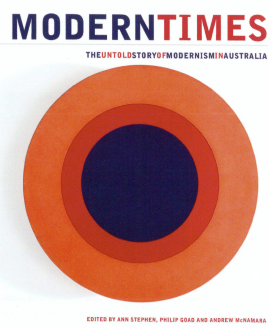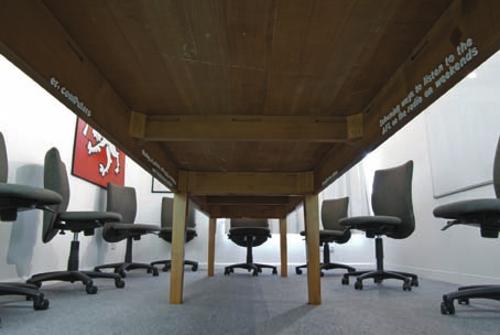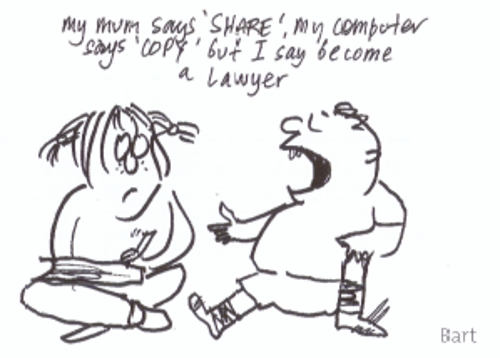
In 1922 D.H. Lawrence observed that Australia (he meant Sydney) 'lacked an inner life', and to a degree he was correct. After all, in 1922 what we now call ‘the country’ was still being fabricated; it would be another decade until that icon of modernism, the Sydney Harbour Bridge was constructed by which time the Great Depression had set in, closely followed by World War 2. With few exceptions, prevailing ideologies in Australia in the first half of the 20th century were anti-modern in both socialist and conservative circles. Modernism was something that one went overseas to experience and it wasn’t until the 1950s that suburban modernism found its way down-under.
However, Modern Times: the untold story of modernism in Australia, is one of a new breed of books that is giving the lie to the above view of Australian cultural history. The second part of a long-term research project into the reception of modernism in Australia, Modern Times comprises twenty-five essays detailing aspects of Australia’s engagement with the modern movement, spanning the disciplines of visual art, design and architecture. The title is somewhat misleading as the book concerns itself with the impact (or otherwise) of modernism predominantly on Sydney and to a degree, Melbourne and thus the story of modernism’s effect on the rest of Australia still remains untold. However, in spite of the east coast orientation the whole point of the book is to emphasise that manifestations of modernism in Australia between 1917 and 1967 were considerably more pervasive than simply the art of Margaret Preston, the Sydney Harbour Bridge and FJ Holdens.
Given the fabricated nature of Australia’s cultural trajectory it was inevitable that the country’s experience of modernism would be largely derivative. The seduction of Dad and Dave by the big city in Dad and Dave Come to Town mirrors the seduction of Australia by the forces of international modernism, and yet, as this book makes apparent, the home-grown products of the modernist imperative gained considerable impetus from local conditions. With the usual icons of Australian modernism largely absent (at least in discussion) the focus of the essays is on Speedos and swimming pools, the modernist appropriation of Aboriginal motifs, hotel architecture, fountains, milk bars, interior and furniture design and aspects of visual art not usually discussed in mainstream histories.
Modern Times manages to be both scholarly and accessible. Copious footnotes in all the essays await the student of cultural history and while the majority of the essays are quite specific, the generous quantity of images adds further layers of textural engagement to this exercise in cultural archaeology.
One minor gripe - two full page photographs of Sydney - one, taken in 1960, during the day from the air looking over Circular Quay, the CBD and the inner western suburbs: the other, taken in 1970, at night from a lower altitude focusing in on the CBD lit up in a maze of glittering rectangular cubes. The two photographs allegedly demonstrate the transformation in Sydney’s downtown over the ten year period, however, if you look closely there is barely any change in the architecture. This is smoke and mirrors stuff and should not be included in a book that contains so much other excellent information.












